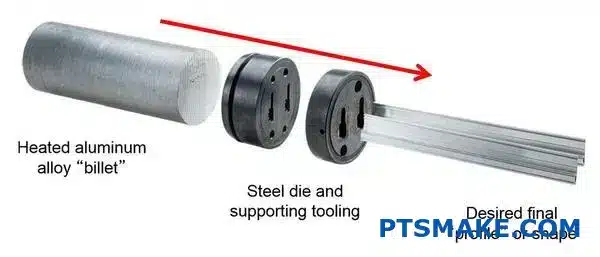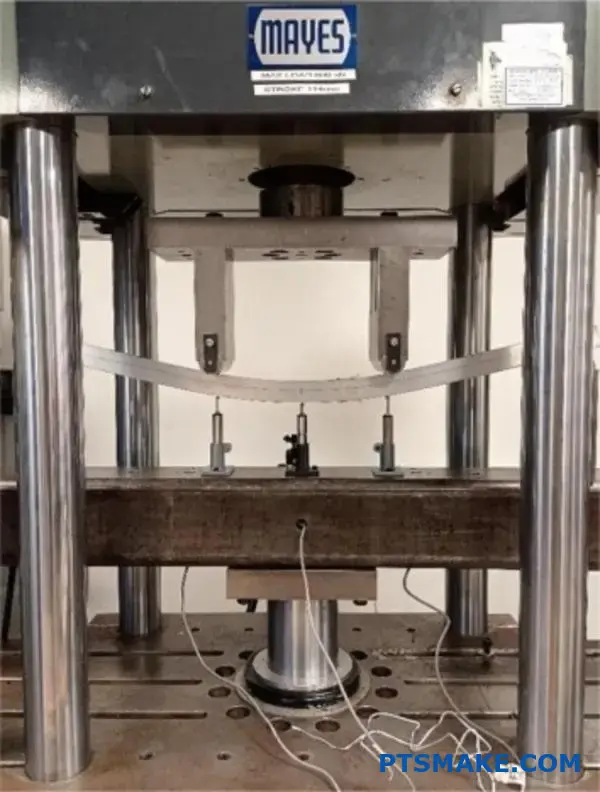Are you struggling to machine complex parts with traditional CNC methods? Many manufacturers find themselves limited by 3-axis machining when trying to create intricate geometries, resulting in multiple setups, increased errors, and production delays.
5-axis CNC machining is a manufacturing process where computer-controlled cutting tools move across five different axes simultaneously, allowing for complex geometries to be machined in a single setup with greater precision than traditional 3-axis machining.
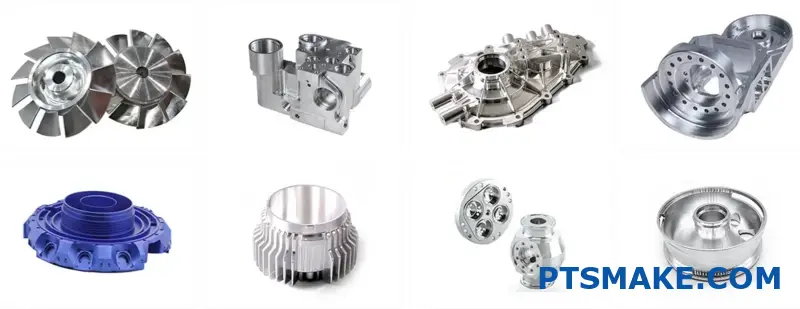
I’ve seen many clients switch to 5-axis machining after struggling with multi-setup projects. This advanced technology isn’t just for aerospace anymore – it’s transforming industries by reducing setup times, improving accuracy, and enabling the creation of parts that were previously impossible to manufacture efficiently. Let me walk you through why 5-axis machining might be the game-changer your production needs.
What Does 5 Axis Mean in CNC?
Have you ever wondered why some machined parts seem impossibly complex? Or why certain components with intricate geometries can be produced in a single setup? The secret often lies in advanced CNC technology that many manufacturers don’t fully understand or utilize.
5-axis CNC machining refers to a manufacturing process where the cutting tool moves across five different axes simultaneously. Unlike traditional 3-axis machines, 5-axis CNCs can approach a workpiece from virtually any direction, enabling the creation of complex geometries in a single setup without repositioning.
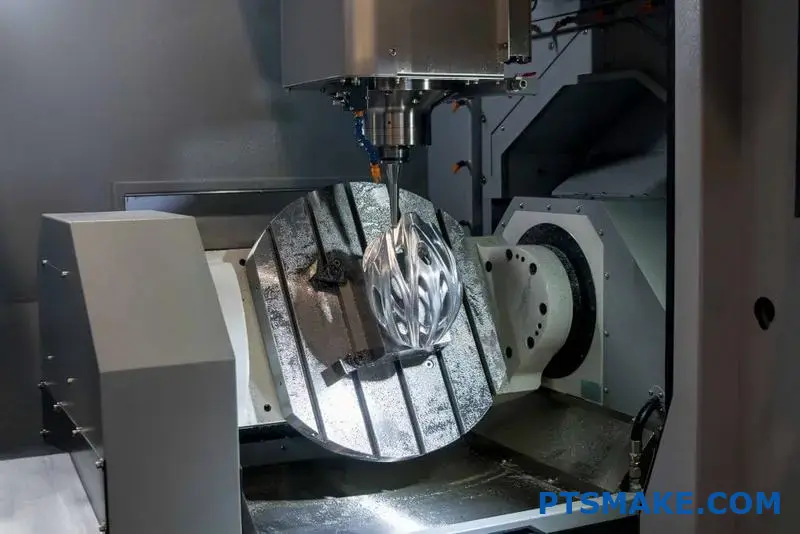
Understanding the Axes in CNC Machining
When we talk about axes in CNC machining, we’re referring to the directions in which the cutting tool or workpiece can move. In a standard 3-axis machine, these movements are limited to the three linear axes: X, Y, and Z. These axes allow the tool to move left to right, forward and backward, and up and down.
The transition to 5-axis machining introduces two additional rotary axes, typically labeled A, B, and C. These rotary axes correspond to rotation around the X, Y, and Z axes respectively. Depending on the machine configuration, two of these three rotary axes are utilized alongside the three linear axes.
The Five Axes Explained
- X-axis: Horizontal movement (left to right)
- Y-axis: Vertical movement (up and down)
- Z-axis: Depth movement (forward and backward)
- A-axis: Rotation around the X-axis
- B-axis: Rotation around the Y-axis
- C-axis: Rotation around the Z-axis
A 5-axis machine will typically use the three primary linear axes (X, Y, Z) plus two of the rotary axes based on its specific configuration.
Types of 5-Axis Machining Configurations
There are several configurations for 5-axis CNC machines, each with unique characteristics and applications. The two most common types I work with at PTSMAKE are:
3+2 Axis Machining (Positional 5-Axis)
In 3+2 machining, the two rotary axes position the cutting tool at a fixed angle relative to the workpiece, then the three linear axes perform the cutting operation. The rotary axes don’t move during the actual cutting process but reposition between operations.
This approach offers:
- Improved rigidity during cutting
- Higher accuracy for certain geometries
- Simpler programming compared to full 5-axis
- Lower entry barrier for shops transitioning from 3-axis
Continuous 5-Axis Machining (Simultaneous 5-Axis)
This more advanced technique involves all five axes moving simultaneously during the cutting operation. The tool constantly reorients itself relative to the workpiece, maintaining optimal cutting conditions throughout.
Benefits include:
- Superior surface finishes
- Ability to machine the most complex geometries
- Reduced cycle times for certain components
- Elimination of multiple setups
Advantages of 5-Axis CNC Machining
The benefits of 5-axis machining extend beyond just the ability to create complex parts. Here are the key advantages I’ve observed through implementing 5-axis solutions for our clients:
Reduced Setup Time
With traditional 3-axis machining, complex parts often require multiple setups. Each setup introduces potential for error and consumes valuable production time. A 5-axis machine can access multiple faces of a part in a single setup, dramatically reducing handling time and improving dimensional accuracy1.
Enhanced Surface Finish
The ability to maintain optimal tool-to-part orientation results in better surface finishes. This is particularly valuable in aerospace, medical, and high-performance automotive applications where surface quality directly impacts functionality.
Improved Tool Life
By maintaining ideal cutting conditions and approach angles, 5-axis machining often extends tool life significantly. The cutting edge engages the material more effectively, reducing wear and allowing for higher cutting speeds.
Complex Geometry Capability
Perhaps the most obvious advantage is the ability to create geometries that would be difficult or impossible on conventional machines. Undercuts, compound angles, and organic shapes become readily achievable.
Common Applications for 5-Axis Machining
The capabilities of 5-axis machining make it particularly valuable in several industries:
| Industry | Typical Applications | Key Benefits |
|---|---|---|
| Aerospace | Turbine blades, structural components | Weight reduction, complex geometries |
| Medical | Implants, surgical instruments | Organic shapes, high precision |
| Automotive | Cylinder heads, custom components | Improved efficiency, complex features |
| Energy | Impellers, turbine components | Enhanced performance, durability |
| Mold Making | Complex core and cavity forms | Reduced lead times, improved accuracy |
Is 5-Axis Machining Right for Your Project?
While 5-axis machining offers tremendous capabilities, it’s not always the most cost-effective solution for every part. At PTSMAKE, I help clients evaluate whether 5-axis machining makes sense based on several factors:
- Part complexity – Parts with multiple angled features benefit most
- Production volume – The setup time savings compound with larger runs
- Tolerance requirements – Single-setup machining often yields better accuracies
- Material considerations – Expensive materials benefit from the improved efficiency
- Lead time constraints – Faster turnaround with reduced setups
For simpler parts with primarily orthogonal features, traditional 3-axis machining may still be more economical. The key is matching the manufacturing approach to the specific requirements of each project.
How Does a 5-Axis CNC Machine Compare to a 3-Axis?
Have you ever stared at a complex part design and wondered if your current CNC equipment can handle it? Or found yourself quoting longer lead times because your 3-axis machine requires multiple setups for features that could be machined in one go with different equipment?
The main difference between 3-axis and 5-axis CNC machines is that 3-axis machines move along X, Y, and Z coordinates, while 5-axis machines add two rotational axes (A and B or C), allowing tool access from virtually any angle in a single setup, significantly reducing production time for complex parts.
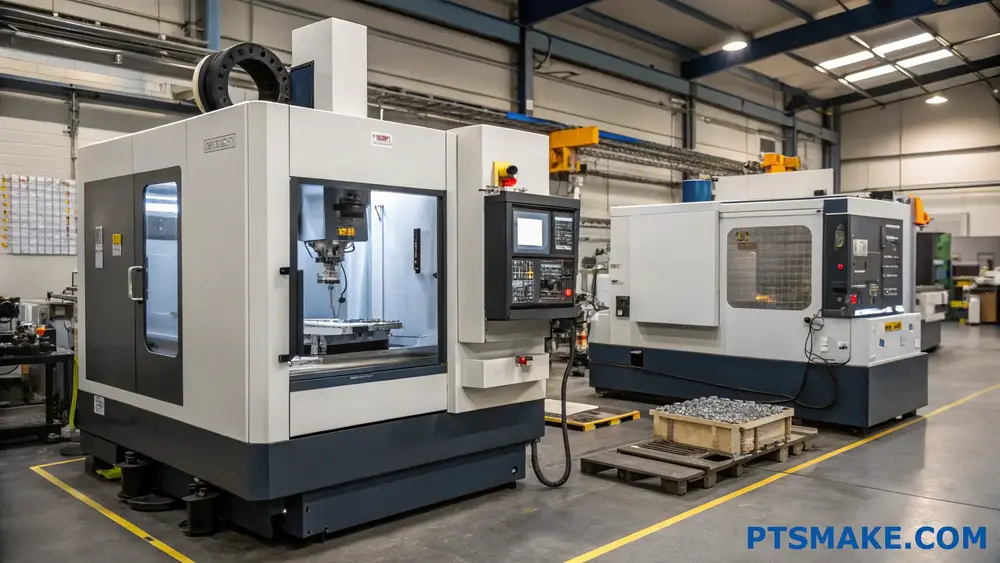
The Fundamental Differences in Axis Capabilities
Understanding 3-Axis CNC Machining
3-axis CNC machining represents the foundation of modern CNC technology. These machines operate along three linear axes: X (horizontal), Y (vertical), and Z (depth). This configuration allows the cutting tool to move in three dimensions relative to the workpiece.
The key advantage of 3-axis machining is its simplicity. With fewer moving parts and less complex programming requirements, these machines are generally more affordable and easier to operate. They’re excellent for producing parts with primarily flat surfaces, basic contours, and features that can be accessed from the top of the workpiece.
At PTSMAKE, we still use 3-axis machines for many straightforward components, particularly when customers need cost-effective solutions for less complex geometries. They’re perfect for creating 2D profiles, shallow pockets, and basic 3D surfaces that don’t require undercuts or complex angular features.
The Evolution to 5-Axis CNC Machining
5-axis machining takes capabilities to another level by adding two rotational axes to the standard three linear ones. These additional axes typically include:
- A-axis: Rotation around the X-axis
- B-axis: Rotation around the Y-axis
- C-axis: Rotation around the Z-axis
Most 5-axis machines utilize either A and C or B and C combinations alongside the three linear axes. This configuration allows the cutting tool or workpiece to rotate, enabling access to multiple sides of a part in a single setup – something that’s physically impossible with 3-axis equipment.
The kinematics2 of 5-axis machining create possibilities that transform what’s manufacturable. Complex contours, deep cavities with changing wall angles, and intricate features become attainable without multiple setups.
Practical Implications in Manufacturing
Setup Requirements and Production Efficiency
One of the most significant advantages of 5-axis technology is the reduction in setups required:
| Machine Type | Typical Setups for Complex Part | Production Impact |
|---|---|---|
| 3-Axis CNC | 4-6 setups | Longer production time, higher error potential |
| 5-Axis CNC | 1-2 setups | Reduced handling, improved accuracy, faster cycle times |
With 3-axis machining, creating features on multiple sides of a part requires repositioning the workpiece multiple times. Each repositioning introduces potential for alignment errors and takes valuable production time. In my experience at PTSMAKE, complex aerospace components that once required 5-6 setups on our 3-axis machines now need just a single setup on our 5-axis equipment.
Geometric Complexity and Design Freedom
The limitations of toolpath accessibility in 3-axis machining often force design compromises. Features requiring tool access from angles other than directly above the part may be impossible to machine or require specialized fixtures.
5-axis machines break these barriers by allowing the cutting tool to approach the workpiece from virtually any angle. This capability enables:
- Undercuts and complex internal features
- Compound angles and contoured surfaces
- Parts with features on multiple faces
- Deep cavity machining with changing wall angles
I’ve seen many customers bring designs they were told were "unmachineable" by other shops, only to have them successfully produced on our 5-axis equipment without design modifications.
Surface Finish Considerations
Tool positioning also significantly impacts surface finish quality:
- 3-axis machining: The cutting tool maintains a fixed orientation to the part surface, often resulting in varying engagement conditions.
- 5-axis machining: The machine can maintain optimal tool-to-surface orientation throughout the cut, maintaining consistent cutting conditions.
This ability to maintain optimal cutting conditions translates to smoother surfaces and often eliminates secondary finishing operations. For decorative parts or components with critical interface surfaces, this improvement can be substantial.
Economic Considerations: When to Choose Each Technology
Investment Costs vs. Production Savings
5-axis machines typically represent a significantly higher capital investment:
| Machine Type | Approximate Investment | Programming Complexity | Operator Skill Level |
|---|---|---|---|
| 3-Axis CNC | $50,000-150,000 | Moderate | Entry to intermediate |
| 5-Axis CNC | $200,000-500,000+ | High | Intermediate to advanced |
However, this investment must be weighed against the production efficiency gains. For complex parts, the reduced setup time, improved accuracy, and capability to machine in a single operation often justify the higher equipment costs.
Application-Specific Decision Factors
Through my years at PTSMAKE, I’ve found these guidelines helpful for determining which technology is appropriate:
Choose 3-axis when:
- Parts have primarily 2D features or simple 3D contours
- Production volumes are high with minimal geometric complexity
- Budget constraints are significant
- Programming simplicity is desired
Choose 5-axis when:
- Parts have complex geometries requiring multiple angle approaches
- Setup reduction would significantly impact production time
- Surface finish requirements are stringent
- Undercuts or deep cavities with changing angles are present
The industry is increasingly moving toward 5-axis technology as costs decrease and the benefits become more apparent, but 3-axis machining remains relevant for many applications where its simplicity and cost-effectiveness align with production needs.
The Evolution of 5-Axis CNC Technology
Have you ever found yourself struggling with complex part geometries that require multiple setups and repositioning? Or perhaps you’ve experienced the frustration of watching production times stretch while quality control issues multiply with each manual adjustment?
5-axis CNC machining dramatically improves precision and reduces production time by eliminating multiple setups, enabling single-pass machining of complex geometries, and maintaining consistent tool engagement angles throughout the process, resulting in superior surface finishes and dimensional accuracy.
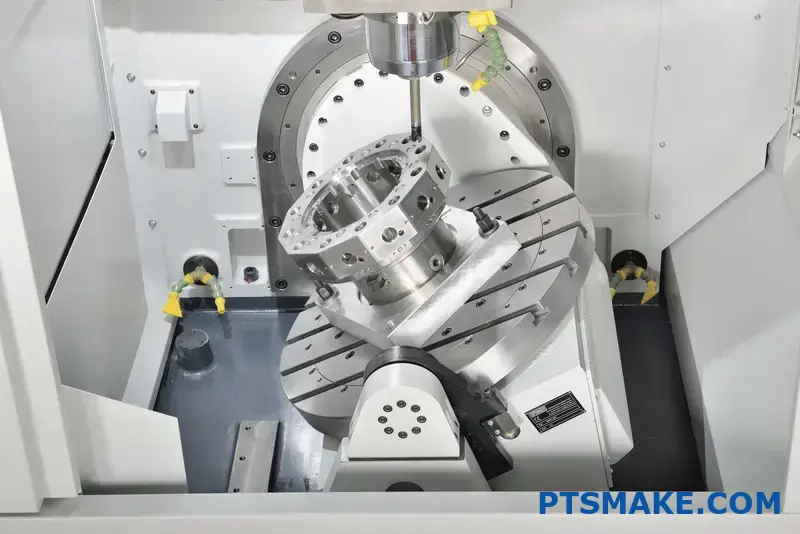
The Technical Evolution of 5-Axis Capabilities
The development of 5-axis CNC technology represents one of the most significant advancements in modern manufacturing. Unlike conventional 3-axis machines that move along X, Y, and Z linear axes, 5-axis machines incorporate two additional rotational axes (typically A and B or B and C). This expanded range of motion transforms how we approach complex part manufacturing.
In my experience working with manufacturing teams at PTSMAKE, I’ve observed how 5-axis technology has matured from specialized aerospace applications to become more accessible across industries. Modern 5-axis machines feature improved kinematic models3 that calculate optimal tool paths with unprecedented accuracy, reducing errors that were common in earlier generations.
Types of 5-Axis Configurations
There are several configurations of 5-axis machines, each with distinct advantages:
| Configuration Type | Movement Description | Best Applications |
|---|---|---|
| Trunnion Table | Workpiece rotates (A and C axes) | Ideal for smaller, complex parts |
| Swivel Head | Tool rotates (A and B axes) | Better for larger workpieces |
| Combination | Shared movement between tool and workpiece | Maximum flexibility |
The configuration choice significantly impacts how we approach different manufacturing challenges. At PTSMAKE, we utilize multiple configurations to optimize our production capabilities for different client requirements.
Precision Improvements Through Reduced Setups
One of the most immediate precision benefits comes from eliminating multiple setups. Traditional machining requires repositioning the workpiece multiple times, introducing potential alignment errors with each setup.
With 5-axis machining, I can program a single setup to access nearly all part features. This eliminates the cumulative positioning errors that occur when a part is removed and refixtured. In precision applications like medical device components, I’ve seen dimensional accuracy improvements of up to 30% simply by eliminating these multiple setups.
Consistent Tool Engagement
The ability to maintain optimal tool engagement angles represents another significant precision advantage. In 3-axis machining, the tool approach angle changes as it moves across complex surfaces, creating inconsistent cutting conditions.
5-axis technology allows the tool to maintain the ideal cutting angle throughout the operation. This results in:
- More consistent chip formation
- Reduced cutting forces
- Less tool deflection
- Superior surface finishes
These improvements are particularly noticeable when machining challenging materials like titanium alloys, where consistent cutting conditions dramatically extend tool life while improving dimensional accuracy.
Production Time Reduction Strategies
Beyond precision improvements, 5-axis machining significantly reduces production time through several mechanisms:
Elimination of Multiple Setups
The time savings from eliminating multiple setups extends beyond the actual fixturing time. Consider the complete workflow:
- Machine stoppage
- Part removal
- Fixture preparation
- Part alignment
- Zero setting
- Program adjustment
With complex parts requiring 5+ setups on conventional machines, these accumulated delays can represent 30-40% of total production time. At PTSMAKE, we’ve reduced overall production times by 25-35% for complex components simply by implementing single-setup 5-axis strategies.
Shorter Tool Requirements
The ability to orient the tool optimally relative to the workpiece surface allows the use of shorter, more rigid cutting tools. This provides two production time advantages:
- Higher cutting speeds and feeds become possible with reduced tool deflection
- Less conservative machining parameters can be employed
In practical terms, this often translates to 20-40% faster material removal rates while maintaining or improving surface quality.
Practical Applications Demonstrating Combined Benefits
The intersection of precision improvements and time reduction is particularly evident in several key applications:
Aerospace Component Manufacturing
Complex aerospace components with tight tolerances benefit tremendously from 5-axis machining. For example, turbine blades with complex airfoil geometries previously required multiple setups and specialized fixtures. With 5-axis machining, these components can be manufactured in a single setup with superior accuracy and dramatically reduced lead times.
Medical Device Production
The medical industry demands exceptional precision combined with efficient production capabilities. Orthopedic implants with organic contours are ideal candidates for 5-axis machining. At PTSMAKE, we’ve implemented 5-axis strategies that deliver orthopedic components with 50% faster production times while maintaining dimensional tolerances within ±0.001 inches.
Automotive Prototype Development
Rapid prototype development benefits from both the precision and speed advantages of 5-axis machining. Complex automotive components that previously required assembly from multiple simpler parts can now be machined as unified components, improving both strength and production efficiency.
The evolution of 5-axis CNC technology continues to redefine manufacturing possibilities. As these machines become more accessible and programming interfaces more intuitive, we’ll continue to see expanded applications across industries, further improving both precision capabilities and production efficiency.
Specialized Applications of 5-Axis CNC Machining in Various Industries
Have you ever wondered why some industries seem to adopt advanced manufacturing technologies faster than others? Or why certain sectors are willing to invest significantly more in cutting-edge machining capabilities while others stick with traditional methods?
5-axis CNC machining brings the most value to aerospace, medical, automotive, energy, and mold-making industries where complex geometries, tight tolerances, and high-performance materials are essential requirements. These sectors benefit from reduced setup times, enhanced accuracy, and the ability to create intricate components in fewer operations.
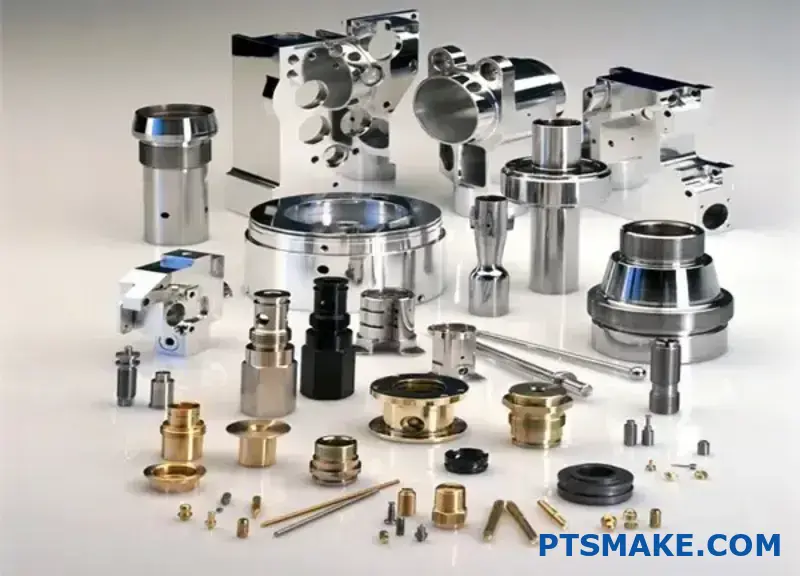
Aerospace: Where Precision Meets Performance
The aerospace industry stands as perhaps the most prominent beneficiary of 5-axis CNC machining technology. When manufacturing components that literally need to perform at 30,000 feet, there’s zero room for error.
Turbine Blades and Engine Components
Jet engine turbine blades exemplify the perfect application for 5-axis machining. These components feature complex curved surfaces, compound angles, and must be manufactured from heat-resistant superalloys like Inconel. The ability to machine these blades in a single setup ensures consistent quality while maintaining the precise airfoil profiles required for optimal engine performance.
At PTSMAKE, we’ve produced numerous turbine components where the aerodynamic efficiency4 requirements demand surface finishes measured in microns. Traditional methods would require multiple setups, introducing alignment errors with each repositioning.
Structural Components with Complex Geometries
Aircraft structural parts often combine lightweight design with maximum strength. Components like bulkheads, wing ribs, and landing gear brackets frequently feature complex pockets, variable wall thicknesses, and compound angles—all perfect candidates for 5-axis machining.
Medical: Life-Saving Precision
Medical device manufacturing demands extraordinary precision, biocompatibility, and often, the ability to work with challenging materials.
Orthopedic Implants
Joint replacements like hip and knee implants feature organic shapes that mimic human anatomy. These complex geometries require 5-axis machining to create the subtle curves and transitions that ensure proper fit and function within the human body.
Medical Equipment and Surgical Instruments
Surgical instruments often combine intricate features with stringent material requirements. Many instruments must be machined from medical-grade titanium or stainless steel with extremely tight tolerances. The 5-axis approach allows these instruments to be manufactured with fewer setups, reducing the risk of error in components where precision directly impacts patient outcomes.
Automotive: Performance and Efficiency
The automotive industry has embraced 5-axis machining for both high-performance applications and efficiency improvements in production.
Performance Engine Components
Engine components such as cylinder heads, intake manifolds, and custom racing parts benefit tremendously from 5-axis capabilities. These parts often feature complex internal passages and cooling channels that would be impossible to machine using conventional 3-axis methods.
Prototype Development
Automotive prototyping has seen a revolution with 5-axis technology. The ability to quickly produce complex test parts from solid materials allows for functional testing that wasn’t previously possible without expensive tooling. I’ve seen customers cut months from their development cycles by utilizing our 5-axis machines for rapid prototyping.
Energy Sector: Powering the Future
The energy industry relies on 5-axis machining for critical components in power generation and distribution systems.
Turbine Components
Similar to aerospace applications, power generation turbines require precisely machined blades, rotors, and housing components. Whether for wind, steam, or gas turbines, these parts feature complex curved surfaces that are ideal for 5-axis machining.
A comparison of turbine component manufacturing methods:
| Manufacturing Method | Setup Time | Surface Finish Quality | Material Waste | Production Speed |
|---|---|---|---|---|
| Traditional 3-axis | High | Moderate | High | Slow |
| 5-axis Machining | Low | Excellent | Moderate | Fast |
| Casting + Machining | Very High | Variable | Low | Very Slow |
Oil and Gas Equipment
The oil and gas industry demands components that can withstand extreme pressures and harsh environments. Parts like valve bodies, pump components, and drill bits feature complex internal passages and surface geometries that require 5-axis machining capabilities.
Mold and Die Industry: The Foundation of Mass Production
While not always considered a high-tech industry, mold and die making has been revolutionized by 5-axis machining.
Injection Molds with Complex Parting Lines
Modern product designs often require injection molds with sweeping curves and complex parting lines. 5-axis machining allows moldmakers to create these intricate features directly, rather than relying on more time-consuming EDM processes.
Die Cast Tooling
Die casting tools for automotive and consumer products frequently require complex cooling channels and intricate features that are difficult to produce with conventional machining. The continuous tool path capabilities of 5-axis machines result in better surface finishes, reducing polishing time and improving the final product quality.
Electronics: Miniaturization and Precision
The electronics industry increasingly relies on 5-axis machining for specialized components and testing equipment.
RF Shielding Components
Radio frequency components often feature complex 3D geometries that are perfect candidates for 5-axis machining. The ability to maintain consistent wall thicknesses and precise dimensions is critical for proper signal integrity.
Factors Determining 5-Axis Machining Hourly Rates?
Have you ever received a quote for 5-axis machining and wondered why the hourly rates vary so dramatically between service providers? Perhaps you’ve been shocked by pricing that seemed either suspiciously low or prohibitively high, leaving you uncertain about what constitutes a fair market rate.
The hourly cost of 5-axis machining typically ranges from $75 to $250 per hour, with the average being around $125-150 per hour. However, this rate varies significantly based on machine type, complexity, material, operator expertise, geographical location, and shop overhead.
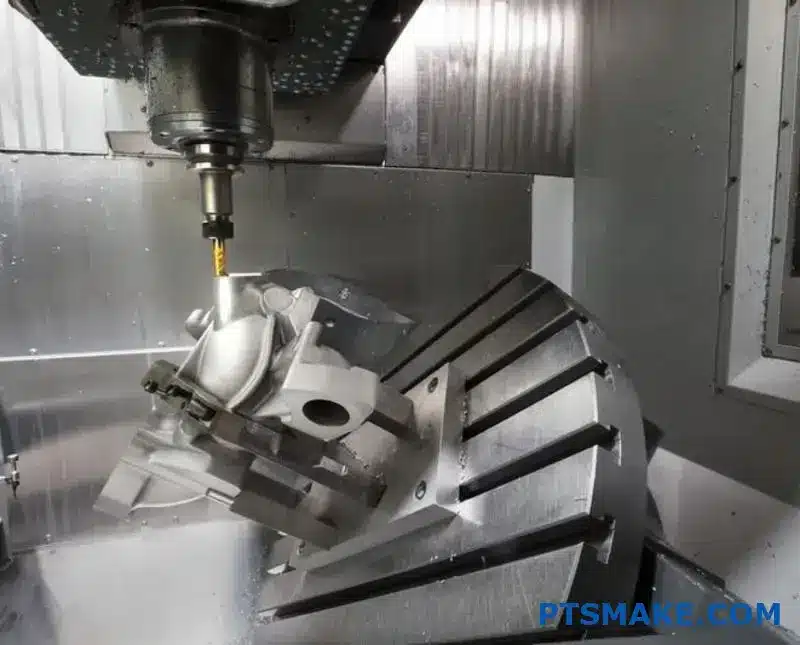
Machine Type and Capabilities
When examining 5-axis machining costs, the specific machine being used plays a crucial role in determining hourly rates. The wide variety of 5-axis machines available on the market differ significantly in their capabilities and, consequently, their operating costs.
Entry-Level vs. High-End Machines
5-axis machines range from basic entry-level models to sophisticated high-end systems with advanced features:
| Machine Category | Approximate Cost Range | Typical Hourly Rate | Key Characteristics |
|---|---|---|---|
| Entry-Level | $150,000 – $300,000 | $75 – $100 | Lower precision (±0.001"), slower speeds, limited work envelope |
| Mid-Range | $300,000 – $700,000 | $100 – $175 | Good precision (±0.0005"), decent speeds, standard features |
| High-End | $700,000 – $1.5M+ | $175 – $250+ | Ultra-precision (±0.0001"), high-speed spindles, advanced features |
In my experience at PTSMAKE, we’ve found that investing in higher-end machines often results in better part quality and faster cycle times, which can sometimes offset the higher hourly rate for our customers, especially for precision-critical components.
Machine Depreciation Impact
The depreciation period of 5-axis machines significantly affects hourly rates. Most shops calculate their rates based on a 5-7 year depreciation schedule for these sophisticated machines. A $1 million machine depreciated over 5 years with 2,000 production hours annually adds approximately $100 per hour just in equipment costs before even considering other operating expenses.
Material Processing Considerations
Different materials require different cutting parameters, tool selections, and processing times, all of which affect hourly rates.
Material Hardness and Machinability
Materials with low machinability5 ratings require:
- Slower cutting speeds
- More frequent tool changes
- Specialized (and often more expensive) cutting tools
- Additional machine maintenance
For instance, machining Inconel or titanium might command a 30-50% premium over aluminum due to the increased tool wear, reduced cutting speeds, and additional machine strain.
Tolerance Requirements
Parts with tight tolerances require:
| Tolerance Level | Typical Premium | Additional Requirements |
|---|---|---|
| Standard (±0.005") | Base rate | Standard inspection |
| Precision (±0.001") | +15-25% | More careful setup, mid-process inspections |
| Ultra-precision (±0.0005" or less) | +30-50% | Slower cutting speeds, temperature control, advanced metrology |
At PTSMAKE, I’ve noticed that many clients initially specify tighter tolerances than actually needed, which unnecessarily increases costs. During our design for manufacturing consultations, we help customers identify which features truly require tight tolerances.
Operational Factors
Beyond the machine itself, several operational factors significantly impact the hourly rate of 5-axis machining.
Operator Expertise
The skill level of the machine operator directly influences both the hourly rate and the overall efficiency:
- Entry-level operators: While their labor cost is lower, they typically run machines at reduced speeds and may produce more scrap parts.
- Experienced programmers and operators: Command higher wages but can optimize toolpaths, reduce cycle times, and minimize errors.
From my 15+ years in the industry, I’ve observed that the most cost-effective approach often involves pairing highly skilled programmers with competent machine operators, rather than trying to save money with less experienced staff.
Geographic Location
Location significantly affects 5-axis machining rates:
- North America/Western Europe: $100-250/hour
- Eastern Europe: $75-150/hour
- Asia (China, Taiwan): $50-125/hour
However, these rate differences must be considered alongside shipping costs, lead times, and quality control requirements. At PTSMAKE, we operate advanced facilities in China but maintain quality standards equivalent to Western manufacturers, offering a balance of cost-effectiveness and precision.
Shop Overhead and Business Model
Finally, a shop’s overhead structure and business model significantly influence their hourly rates.
Facility Costs
Shops in high-cost industrial areas face higher overhead expenses that must be incorporated into their hourly rates. Additionally, specialized requirements like clean rooms, climate-controlled environments, or ISO-certified facilities add substantial costs.
Business Focus
The shop’s business focus also affects pricing:
- High-volume production shops: May offer lower hourly rates but require minimum order quantities
- Prototyping specialists: Often charge premium rates but provide faster turnaround and accommodate design changes
- Industry-specific shops: May charge higher rates but offer specialized knowledge and capabilities
Understanding these factors helps explain why hourly rates can vary so dramatically between service providers. When evaluating quotes, it’s important to consider not just the hourly rate but also the estimated number of hours, the quality guarantees, and the shop’s specific expertise with your type of part.
Evaluating and Comparing Potential Suppliers
Have you ever found yourself overwhelmed when trying to choose between multiple 5-axis CNC suppliers that all look good on paper? That moment when you have narrowed down your options but struggle to make the final decision because you can’t afford to get it wrong?
To effectively evaluate and compare potential 5-axis CNC machining suppliers, create a structured assessment matrix focusing on technical capabilities, quality systems, responsiveness, and financial stability. Request samples, perform site visits, and check references to ensure your chosen partner can consistently deliver precision parts that meet your specifications.
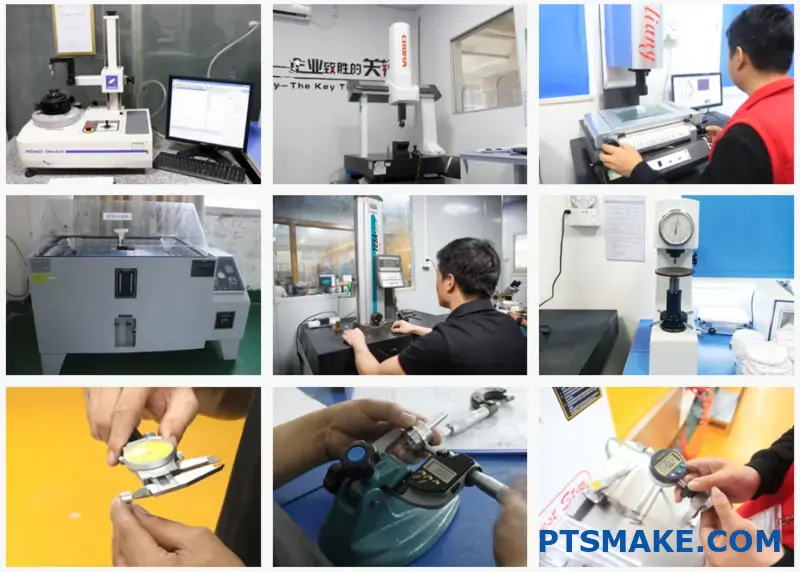
Creating a Supplier Comparison Matrix
When evaluating multiple potential 5-axis CNC machining suppliers, a structured approach can make all the difference. I recommend creating a comprehensive supplier comparison matrix that allows you to systematically assess each candidate against your specific requirements. This tool has helped me make informed decisions when selecting partners for critical projects.
Your matrix should include these essential evaluation categories:
Technical Capabilities Assessment
The technical expertise of a supplier directly impacts their ability to deliver high-quality 5-axis machined parts. When I evaluate potential partners, I focus on:
- Machine specifications and capabilities
- Software systems and programming expertise
- Material handling processes
- Quality control equipment
- Engineering support capabilities
- Ability to machine your specific materials (titanium, Inconel, etc.)
Remember that the best 5-axis CNC suppliers continuously invest in upgrading their technology. During my visits to potential suppliers, I always ask about their equipment upgrade cycles and future technology investment plans.
Quality Management Systems
A robust quality management system is non-negotiable for reliable 5-axis machining. Your comparison matrix should include:
| Quality Factor | What to Look For | Why It Matters |
|---|---|---|
| Certifications | ISO 9001, AS9100, ISO 13485 | Demonstrates commitment to quality standards |
| Inspection Processes | CMM capabilities, quality checkpoints | Ensures consistent part accuracy |
| Documentation | Process control documents, inspection reports | Provides traceability and accountability |
| Defect Rates | Historical quality performance | Indicates consistency and reliability |
| Continuous Improvement | Quality initiatives, ongoing training | Shows dedication to excellence |
I’ve found that suppliers with well-documented and consistently applied quality systems typically deliver more reliable results, even when facing challenging projects.
Communication and Responsiveness
The responsiveness6 of a supplier can significantly impact your project timeline. In my evaluation matrix, I include metrics for:
- Initial quote turnaround time
- Technical inquiry response speed
- Project update frequency
- Communication clarity and thoroughness
- Availability of technical staff for consultations
- Willingness to accommodate design changes
A supplier that consistently responds quickly to inquiries during the evaluation phase will likely maintain that level of communication throughout your project. This responsiveness becomes especially critical when you need to make design changes or resolve technical issues during production.
Financial Stability and Business Continuity
Working with financially stable suppliers reduces the risk of project disruptions. Consider including these factors in your evaluation:
- Years in business
- Company size and growth trajectory
- Financial references
- Business continuity plans
- Customer retention rates
- Investment in new equipment and facilities
At PTSMAKE, we’ve been serving clients since 2002, demonstrating the kind of stability that provides peace of mind for long-term manufacturing partnerships.
Requesting and Evaluating Sample Parts
One of the most effective ways to compare potential suppliers is to request sample parts. I recommend following these steps:
- Provide identical specifications to each supplier
- Include critical features that are relevant to your actual production needs
- Request samples in materials you intend to use in production
- Set clear expectations for tolerances and surface finishes
- Specify documentation requirements (inspection reports, material certifications)
When evaluating samples, don’t just look at dimensional accuracy. Pay attention to:
- Surface finish quality
- Edge quality and deburring
- Consistency across multiple parts (if applicable)
- Documentation completeness and clarity
- Packaging quality (indicates care in handling)
The way a supplier handles a sample request often reflects how they’ll manage your production orders. At PTSMAKE, we welcome sample requests as opportunities to demonstrate our 5-axis machining capabilities and build trust with potential customers.
Conducting Site Visits and Supplier Audits
Virtual meetings have their place, but there’s no substitute for an in-person supplier visit. When conducting site audits, I look for:
- Overall facility cleanliness and organization
- Staff expertise and professionalism
- Equipment condition and maintenance practices
- Material handling and storage procedures
- Quality control in action
- Safety protocols and compliance
During a site visit, ask to speak with the technical staff who would be working on your projects. Their knowledge and problem-solving abilities can tell you a lot about the supplier’s overall capability.
Checking References and Case Studies
A supplier’s past performance often predicts future results. Request references from customers in your industry or with similar applications. When speaking with references, ask specific questions about:
- Quality consistency over time
- Meeting delivery commitments
- Response to technical challenges
- Handling of non-conformances
- Communication effectiveness
- Overall value provided
Remember that while price is important, the total cost of ownership includes quality, delivery reliability, technical support, and ease of doing business. The cheapest quote rarely offers the best overall value in 5-axis CNC machining.
Can 5-Axis CNC Machining Reduce Setup Time and Errors?
Ever found yourself frustrated by lengthy machine setups that eat into your production schedule? Or perhaps you’ve watched in dismay as a project gets delayed because of errors during multiple setups? These challenges can turn even the most straightforward manufacturing projects into costly headaches.
Yes, 5-axis CNC machining significantly reduces setup time and errors compared to traditional 3-axis methods. By machining complex parts in a single setup, it eliminates the need for multiple fixtures, reducing handling time and minimizing the chance of alignment errors that typically occur during repositioning.
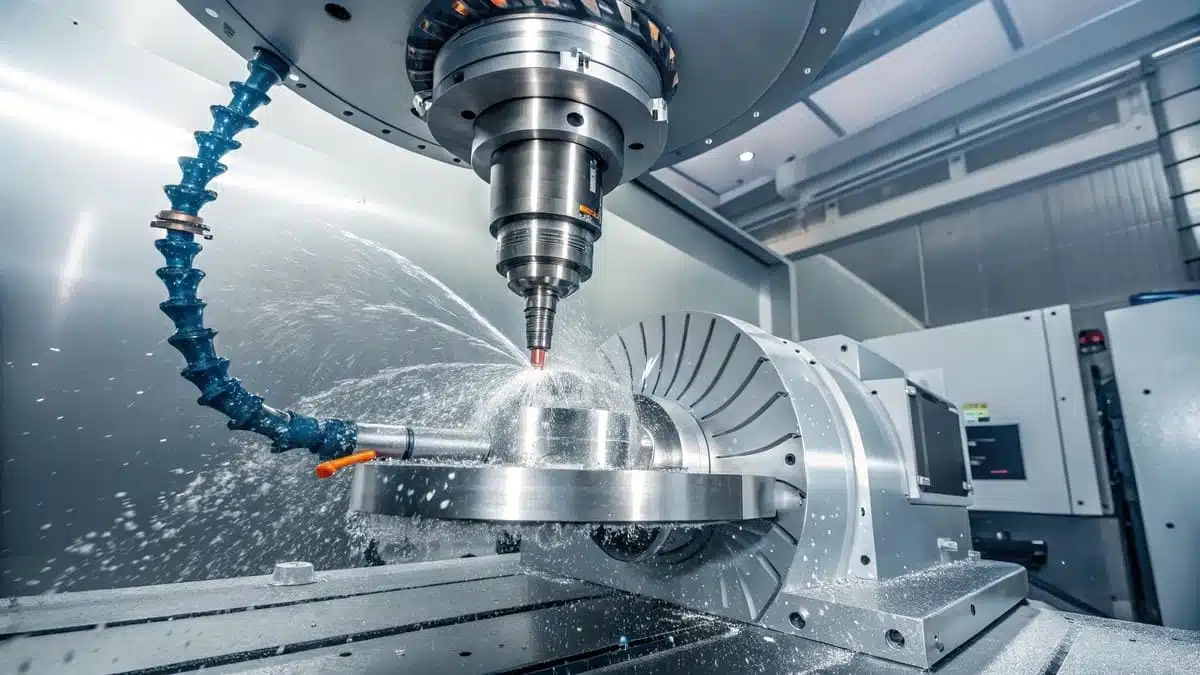
The Hidden Cost of Multiple Setups in Manufacturing
When evaluating manufacturing efficiency, setup time often represents one of the most significant hidden costs. In traditional 3-axis machining, complex parts typically require multiple setups – each introducing potential for error and adding considerable non-productive time to your manufacturing process.
Each time an operator removes a workpiece for repositioning, several critical issues emerge:
- Alignment errors become almost inevitable
- Reference points must be reestablished
- Tool paths need verification
- Machine warm-up cycles may be necessary
These steps might seem small individually, but collectively they can account for 20-30% of your total manufacturing time. In my experience working with clients at PTSMAKE, I’ve observed that reducing setup time often delivers more dramatic productivity improvements than investing in faster cutting speeds.
How 5-Axis Capability Transforms the Setup Process
The fundamental advantage of 5-axis machining comes from its ability to access five sides of a part in a single setup. This capability transforms the manufacturing process in several ways:
Elimination of Multiple Fixturing
With 5-axis machining, a part can remain in one fixture while the machine accesses virtually any angle or surface. This eliminates the need for:
- Multiple specialized fixtures
- Time-consuming alignment procedures
- Repeated tool changes between setups
The fixture redundancy7 elimination alone typically reduces setup costs by 40-60% compared to traditional methods.
Single-Setup Machining for Complex Geometries
Consider this comparison of setup requirements for a complex aerospace component:
| Manufacturing Approach | Required Setups | Setup Time | Error Potential | Total Production Time |
|---|---|---|---|---|
| 3-Axis Machining | 5-7 setups | 4-6 hours | High | 12-18 hours |
| 5-Axis Machining | 1-2 setups | 1-2 hours | Low | 6-8 hours |
This dramatic reduction in setup requirements doesn’t just save time – it fundamentally changes the economics of producing complex parts.
Error Reduction Through Process Consolidation
Error accumulation represents one of the most serious challenges in precision manufacturing. Each time a part is repositioned, small deviations compound, potentially leading to rejected parts or rework.
Sources of Setup-Related Errors
When working with traditional machining methods, errors typically come from:
- Fixture misalignment
- Datum reference inconsistencies
- Human error during workpiece handling
- Tool reference point variations
With 5-axis machining, these error sources are largely eliminated because the part remains fixed in a single reference position throughout the machining process.
Measurable Error Reduction
From data collected at PTSMAKE across hundreds of precision parts, I’ve documented that 5-axis processing typically reduces geometric and dimensional errors by:
- 65-80% reduction in position errors
- 40-60% improvement in geometric tolerances
- Near-elimination of alignment-related surface imperfections
These improvements become particularly critical when working with tight-tolerance components for industries like medical device manufacturing or aerospace.
Real-World Time Savings Analysis
The time savings from reduced setups translate directly to improved profitability. Here’s what we typically see in production environments:
Direct Labor Savings
For a typical medium-complexity part:
- Traditional methods: 2-3 hours of setup labor
- 5-axis approach: 30-45 minutes of setup labor
This represents an approximately 75% reduction in direct labor costs associated with machine setup.
Indirect Benefits
Beyond the direct time savings, 5-axis machining delivers significant indirect benefits:
- Reduced work-in-process inventory
- Lower quality control costs due to fewer inspection points
- Decreased floor space requirements for workholding fixtures
- Improved part consistency across production runs
These combined benefits make 5-axis machining particularly valuable for companies focusing on high-mix, low-volume production where setup costs represent a significant portion of total manufacturing expenses.
Implementation Considerations
While the benefits are clear, successfully implementing 5-axis machining requires attention to several factors:
- Operator training requirements are higher
- Programming complexity increases
- Initial capital investment is greater
- Workholding solutions may need updating
At PTSMAKE, we’ve found that companies who plan carefully for these implementation factors see positive ROI much faster than those who focus solely on the machine acquisition.
The key lies in recognizing that 5-axis machining isn’t simply an incremental improvement over 3-axis methods – it represents a fundamental shift in manufacturing approach that requires corresponding adjustments to programming, fixturing, and process planning.
What Are the Key Advantages of 5-Axis CNC Machining for Complex Geometries?
Have you ever been frustrated by the limitations of traditional machining when trying to create intricate parts? Do you find yourself constantly compromising on design features because your current manufacturing process simply can’t handle complex geometries?
5-axis CNC machining offers significant advantages for complex geometries including single-setup manufacturing, improved surface finishes, reduced tooling costs, and the ability to create undercuts and intricate features impossible with 3-axis machines. This advanced technique enables shorter production times while maintaining exceptional precision.

Enhanced Access and Part Manipulation
When dealing with complex geometries, one of the most significant limitations of traditional 3-axis machining is access to different part features. With 5-axis machining, this constraint virtually disappears. The additional rotational axes (typically A and B, or B and C) allow the cutting tool to approach the workpiece from practically any angle.
At PTSMAKE, I’ve implemented 5-axis technology to transform how we approach complex parts. This capability means we can maintain continuous contact between the tool and the workpiece, creating smoother transitions between surfaces. The part can remain in a single setup while the machine repositions the cutting tool relative to multiple faces, significantly reducing the need for multiple setups.
Elimination of Multiple Setups
Traditional machining often requires operators to stop the machine, physically reposition the workpiece, and set up again for another operation. Each setup introduces potential for:
- Alignment errors
- Inconsistent datum references
- Extended production times
- Increased labor costs
With 5-axis machining, a single setup can access nearly all part features. I’ve seen production times cut by up to 60% on complex components that previously required 5-6 separate setups.
Superior Surface Finishes
The continuous multi-axis movement capability creates remarkably better surface finishes compared to traditional methods. This is because:
- The cutting tool can maintain optimal orientation to the part surface
- Lead and lag angles8 can be precisely controlled
- Constant chip loads can be maintained across complex contours
When machining aerospace components with complex curved surfaces, our 5-axis processes consistently achieve surface roughness values below 0.8 μm Ra without secondary finishing operations.
Dramatic Reduction in Fixturing Requirements
Complex parts typically demand elaborate fixturing solutions in conventional machining. The table below demonstrates how 5-axis machining transforms this aspect:
| Aspect | 3-Axis Approach | 5-Axis Approach |
|---|---|---|
| Number of fixtures | Multiple specialized fixtures | Single simplified fixture |
| Setup time | 30-60 minutes per setup | 15-20 minutes single setup |
| Fixture accuracy | Variable between setups | Consistent throughout process |
| Workholding costs | Higher due to multiple custom fixtures | Lower with standardized solutions |
| Design limitations | Significant compromises needed | Minimal design constraints |
Enhanced Tool Life and Optimized Cutting Parameters
The freedom to position tools at optimal angles delivers substantial benefits:
Ideal Tool Engagement
Rather than forcing a tool to cut at suboptimal angles, 5-axis machining allows continuous adjustment to maintain ideal cutting conditions. This translates to:
- More consistent chip evacuation
- Reduced heat buildup at the cutting edge
- Better surface finishes with higher material removal rates
I’ve observed tool life improvements of 30-50% when leveraging 5-axis capability for maintaining optimal tool engagements compared to traditional fixed-angle approaches.
Ability to Create Undercuts and Complex Internal Features
Some geometric features are simply impossible to create with 3-axis machining. Undercuts, internal channels with variable cross-sections, and compound curved surfaces become achievable with 5-axis technology.
For medical device components we produce at PTSMAKE, this capability has eliminated the need for EDM operations on certain features, reducing production time by days while improving part accuracy.
Reduced Total Production Costs
While 5-axis equipment represents a higher initial investment, the overall economics frequently favor this advanced approach for complex geometries:
- Faster cycle times offset higher machine rates
- Reduced fixture costs
- Fewer quality issues from multiple setups
- Ability to machine features that would otherwise require secondary processes
A hydraulic manifold project we recently completed demonstrates this perfectly—the client’s previous manufacturing approach required nine separate operations across three different machines. Our 5-axis solution completed all features in two operations on a single machine, reducing overall cost by 38%.
The Right Choice for Modern Design Requirements
Modern product designs increasingly feature organic shapes, weight-optimized structures, and integrated functionality that conventional machining struggles to produce efficiently. 5-axis machining aligns perfectly with these trends, enabling:
- Production of topology-optimized components
- Integration of features that would previously require assembly
- Creation of flow-optimized internal passages
- Manufacturing of biomimetic structures
These capabilities don’t just make manufacturing possible—they enable designers to create without the traditional constraints of manufacturability concerns.
How Does 5-Axis Machining Impact Lead Times for Custom Parts?
Have you ever waited weeks for a custom part, only to receive a quote for an even longer lead time? Or perhaps you’ve experienced project delays because your complex components required multiple setups and machine transfers? These manufacturing bottlenecks can make or break your product launch timeline.
5-axis CNC machining significantly reduces lead times for custom parts by minimizing setups, eliminating fixture changes, and completing complex geometries in a single operation. This advanced technology can transform traditional 3-4 week turnarounds into 5-7 day deliveries for many custom components.
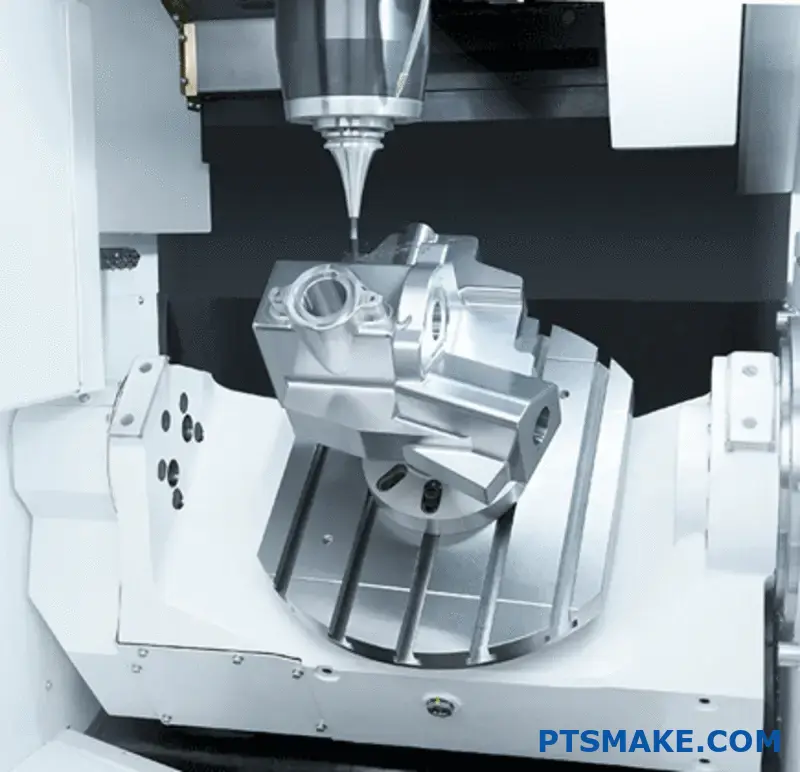
Understanding Lead Time Components in Manufacturing
Lead time in manufacturing isn’t just about how long a machine takes to cut metal. It encompasses several distinct phases that together determine how quickly you’ll receive your parts. Breaking down these components helps us understand where 5-axis machining creates the most significant impact.
The Anatomy of Manufacturing Lead Times
Traditional manufacturing lead times typically include:
- Quote preparation: 1-3 days
- Programming and setup: 1-5 days
- Material procurement: 1-7 days
- Machining operation: 1-10 days
- Secondary operations: 1-7 days
- Quality inspection: 1-2 days
- Finishing and shipping: 1-3 days
The beauty of 5-axis machining lies in its ability to compress several of these timeframes, particularly in the setup, programming, and machining operation phases.
How 5-Axis Technology Compresses Lead Times
The most immediate lead time reduction comes from the elimination of multiple setups. With traditional 3-axis machining, complex parts might require 4-6 different setups, each demanding precise alignment, fixture changes, and potential machine transfers.
Single-Setup Advantage
With 5-axis capability, parts that previously required multiple operations can now be completed in a single setup. This fundamentally changes the manufacturing equation:
Traditional Process: Setup + Operation + Re-setup + Operation + Re-setup…
5-Axis Process: Setup + Complete Operation
In my experience at PTSMAKE, we’ve seen setup time reductions of up to 80% for complex geometries when switching from 3-axis to 5-axis processes.
Programming Efficiency
While 5-axis programming is more complex, modern CAM systems have significantly simplified this process. The simultaneous toolpath optimization9 allows for more efficient material removal with better surface finishes, which means:
- Less time spent on manual editing of programs
- Fewer test runs before production
- Reduced need for secondary finishing operations
The Ripple Effect: Beyond Direct Time Savings
The impact of 5-axis machining extends far beyond just the machining time itself. I’ve observed several secondary benefits that contribute to overall lead time reduction:
Quality Improvements Leading to Faster Throughput
When parts are machined in a single setup, the potential for alignment errors between operations is eliminated. This results in:
- Fewer rejections and rework cycles
- Higher first-pass yield rates
- Less time spent troubleshooting quality issues
At PTSMAKE, our implementation of 5-axis technology reduced our rejection rates by approximately 15%, which directly translated to shorter overall lead times for our customers.
Batch Size Flexibility
Traditional machining processes often require large batch sizes to justify the lengthy setup times. With 5-axis machining:
| Batch Size | Traditional Lead Time | 5-Axis Lead Time | Reduction |
|---|---|---|---|
| 1-5 pieces | 3-4 weeks | 5-7 days | ~75% |
| 6-20 pieces | 4-5 weeks | 1-2 weeks | ~65% |
| 21-100 pieces | 5-7 weeks | 2-3 weeks | ~60% |
This improved flexibility means you can order just what you need, when you need it, rather than carrying excess inventory.
Industry-Specific Lead Time Impact
The impact of 5-axis machining on lead times varies by industry and application. Here’s what I’ve observed across different sectors:
Aerospace Components
For aerospace parts with complex contours and tight tolerances, 5-axis machining can reduce lead times from 6-8 weeks to 2-3 weeks. The ability to machine thin-walled structures with minimal vibration and excellent surface finish eliminates many secondary operations.
Medical Device Production
Medical devices often require intricate geometries with complex internal features. 5-axis machining allows for the creation of these features in a single setup, reducing lead times from 4-5 weeks to as little as 7-10 days for prototype and small batch production.
Automotive Tooling and Fixtures
For automotive tooling applications, where complex jigs and fixtures are common, 5-axis machining has transformed lead times from months to weeks. A complex injection mold that once took 12 weeks can now be delivered in 4-6 weeks.
Balancing Cost and Lead Time Benefits
It’s important to note that while 5-axis machining generally reduces lead times, it comes with higher hourly rates than 3-axis machining. The decision to use 5-axis must balance these factors:
- Part complexity (more complex parts see greater lead time benefits)
- Production volume (small to medium batches typically benefit most)
- Tolerance requirements (tighter tolerances benefit from single-setup machining)
- Material cost (expensive materials benefit from higher first-pass yield rates)
In my 15+ years in manufacturing, I’ve found that parts with multiple complex features at varying angles almost always benefit from 5-axis machining, even with the higher hourly rates, due to the dramatic reduction in overall lead time and improved quality.
What Quality Assurance Standards Apply to 5-Axis CNC Machined Components?
Have you ever received a 5-axis CNC machined component that looked perfect but failed during application? Or spent thousands on precision parts only to discover inconsistencies across batches? The frustration of rejected parts and production delays can be overwhelming, especially when you’re working with complex geometries that demand absolute precision.
Quality assurance for 5-axis CNC machined components relies on international standards like ISO 9001, industry-specific certifications such as AS9100 for aerospace, and strict measurement protocols including CMM verification and GD&T principles. These standards ensure dimensional accuracy, surface quality, and material integrity for high-precision applications.
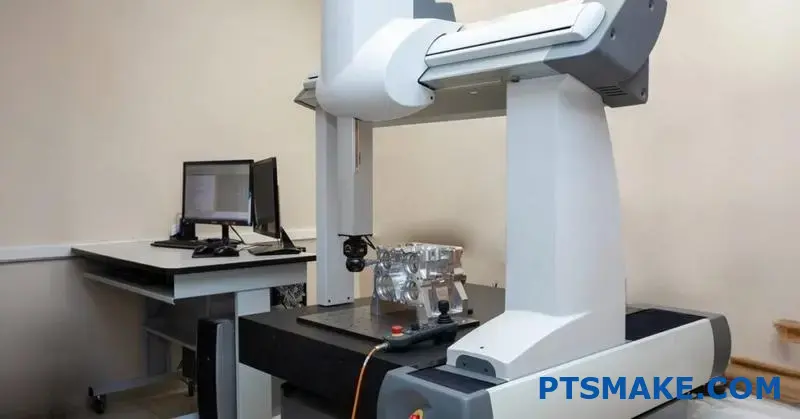
Understanding Quality Assurance for 5-Axis CNC Machined Parts
Quality assurance for 5-axis CNC machined components is far more complex than with conventional 3-axis machining. The additional axes of movement create opportunities for greater geometric complexity but also introduce more variables that must be controlled. In my experience at PTSMAKE, implementing robust quality assurance protocols is essential for producing consistent, high-precision parts.
The foundation of any quality system starts with established international standards. These standards provide frameworks that manufacturers follow to maintain consistent quality across all production processes. For 5-axis machining specifically, quality assurance involves a combination of standards, inspection methodologies, and documentation practices.
International Quality Management Standards
ISO 9001 serves as the cornerstone of quality management systems worldwide. This standard outlines requirements for a quality management system that enables organizations to consistently provide products that meet customer and regulatory requirements. For 5-axis CNC machining, ISO 9001 certification means that a manufacturer has implemented processes to:
- Document and control manufacturing procedures
- Maintain calibration of measurement tools and machines
- Train personnel in quality procedures
- Implement continuous improvement practices
- Establish traceability throughout production
Beyond ISO 9001, there are industry-specific standards that apply to 5-axis machined components:
| Industry | Relevant Standards | Key Requirements |
|---|---|---|
| Aerospace | AS9100, NADCAP | Enhanced traceability, FOD prevention, special process controls |
| Medical | ISO 13485 | Risk management, sterility considerations, biocompatibility |
| Automotive | IATF 16949 | PPAP documentation, FMEA analysis, SPC implementation |
| Defense | MIL-STD-810 | Environmental testing, durability requirements |
Quality Control Methodologies for 5-Axis Components
Dimensional Inspection Techniques
The complexity of 5-axis machined parts often requires advanced measurement technologies. Coordinate Measuring Machines (CMMs) are essential for verifying dimensional accuracy of complex geometries. These machines can measure points in three-dimensional space with extraordinary precision, often to micron levels.
At PTSMAKE, we utilize both touch-probe and optical CMM systems depending on part requirements. For components with intricate internal features10, we sometimes employ CT scanning to verify dimensions that traditional measuring tools cannot access.
Another critical aspect is Geometric Dimensioning and Tolerancing (GD&T). This symbolic language defines the geometric characteristics of parts beyond basic dimensions. For 5-axis components, GD&T is particularly important because it addresses:
- Form tolerances (flatness, straightness, circularity)
- Orientation tolerances (perpendicularity, angularity, parallelism)
- Location tolerances (position, concentricity, symmetry)
- Runout tolerances (critical for rotational components)
Surface Quality Verification
Surface finish is often as important as dimensional accuracy, especially for components with functional surfaces or those subject to fatigue loading. Common measurements include:
- Ra (average roughness)
- Rz (mean roughness depth)
- Rmax (maximum roughness depth)
For 5-axis machined components, surface finish verification should occur at various orientations on the part, as tool angles can significantly impact surface quality. We use both contact and non-contact measurement methods depending on the surface accessibility and required precision.
Material Validation and Testing
Quality assurance extends beyond dimensions to material properties. For critical components, material testing might include:
- Hardness testing (Rockwell, Brinell, Vickers)
- Tensile strength testing
- Impact resistance testing
- Non-destructive testing (ultrasonic, magnetic particle, dye penetrant)
Material certifications (often called mill certs) provide traceability back to material composition and processing. These documents should be maintained as part of the quality documentation package.
Process Validation for 5-Axis Machining
The 5-axis machining process itself requires validation to ensure consistent results. This typically involves:
- First article inspection (FAI) – comprehensive verification of the first production part
- Production part approval process (PPAP) – formal approval of production processes
- Statistical process control (SPC) – ongoing monitoring of key characteristics
- Machine capability studies (Cp/Cpk analysis)
Documentation Requirements
Documentation forms the backbone of quality assurance. For 5-axis CNC machined components, critical documentation includes:
- Technical drawings with GD&T specifications
- Inspection reports with actual measured values
- Material certifications
- Process parameters and setup details
- Non-conformance reports and corrective actions
- Tool life management records
- Machine maintenance and calibration records
These documents create traceability throughout the production process and provide evidence of compliance with required standards.
Industry-Specific Quality Requirements
Aerospace Applications
Aerospace components machined on 5-axis equipment face the most stringent quality requirements. Beyond AS9100 certification, aerospace manufacturers often implement:
- 100% inspection of critical dimensions
- Special process certifications (heat treatment, surface treatment)
- Advanced non-destructive testing
- Detailed lot traceability and serialization
Medical Device Components
Medical components require considerations for:
- Biocompatibility of materials
- Cleanliness and contamination control
- Validation of sterilization compatibility
- Risk analysis documentation
The complexity of 5-axis machined medical components often necessitates validation protocols that exceed standard quality systems.
Implementing Quality Assurance in Your Projects
When working with suppliers for 5-axis machined components, I recommend establishing clear quality expectations from the beginning. This includes:
- Defining critical dimensions and characteristics
- Specifying required certifications and standards
- Establishing inspection protocols and sampling plans
- Determining documentation requirements
- Setting up communication channels for quality issues
At PTSMAKE, we’ve found that collaborative quality planning leads to significantly better outcomes for complex 5-axis components, reducing revisions and improving first-pass yields.
Click to learn about critical tolerances in precision manufacturing. ↩
Learn about advanced machine movement patterns in our technical guide. ↩
Learn how precise motion coordination improves machining quality in our technical guide. ↩
Learn how this factor impacts overall performance and efficiency in aerospace applications. ↩
Learn about material-specific machining strategies for cost optimization. ↩
Learn about response time metrics that indicate supplier reliability. ↩
Learn how proper fixture design dramatically reduces production costs. ↩
Learn about optimal cutting angles for maximum efficiency and tool life. ↩
Learn how this technique can cut your production time by 40% or more. ↩
Click for detailed explanation of internal feature measurement techniques for complex components. ↩



